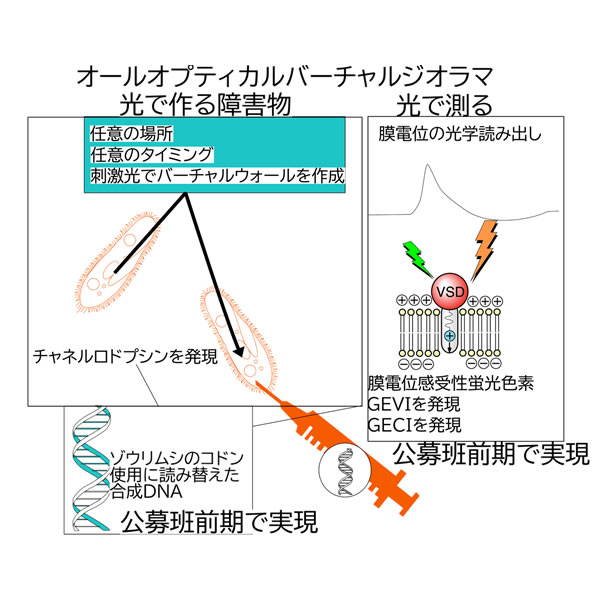Grant-in-Aid for Transformative Research Areas (A)
Publicly Offered Research:2024FY
Exploring Proto-Intelligence of Paramecium Through an All-Optical Virtual Diorama
- Principal
investigator - Tominaga, TakashiInstitute of Neuroscience, Tokushima Bunri University
Paramecium has been used as a model organism to study animal behavior for over 100 years, especially since the 1970s when it was referred to as the "swimming neuron" and "swimming receptor". This unicellular organism serves as an important model whose behavior can be analyzed largely in terms of membrane potential responses and intracellular signaling systems, such as Ca2+. These insights are based on precise electrophysiological techniques, including two-electrode voltage clamping. Recently, a novel form of behavior has been discovered that suggests the existence of higher intelligence responses beyond conventional mechanistic understanding. To explore this further, I propose the use of a virtual diorama environment. I have studied the brain, particularly the hippocampus, using membrane potential imaging with voltage-sensitive dye (VSD). I have applied this technique to Paramecium and demonstrated that optical readout of its membrane potential can be achieved. I also made genetically encoded Ca indicator for paramecium and did Ca2+ imaging. By combining these optical recording methods, I propose to introduce optogenetics. We will create a virtual diorama in which virtual obstacles can be controlled by manipulating light, thus creating an all-optical virtual diorama. This approach will reveal that Paramecium cells possess a form of intelligence (proto-intelligence) beyond conventional biomechanical understanding.

 Ethological dynamics in diorama environments
Ethological dynamics in diorama environments